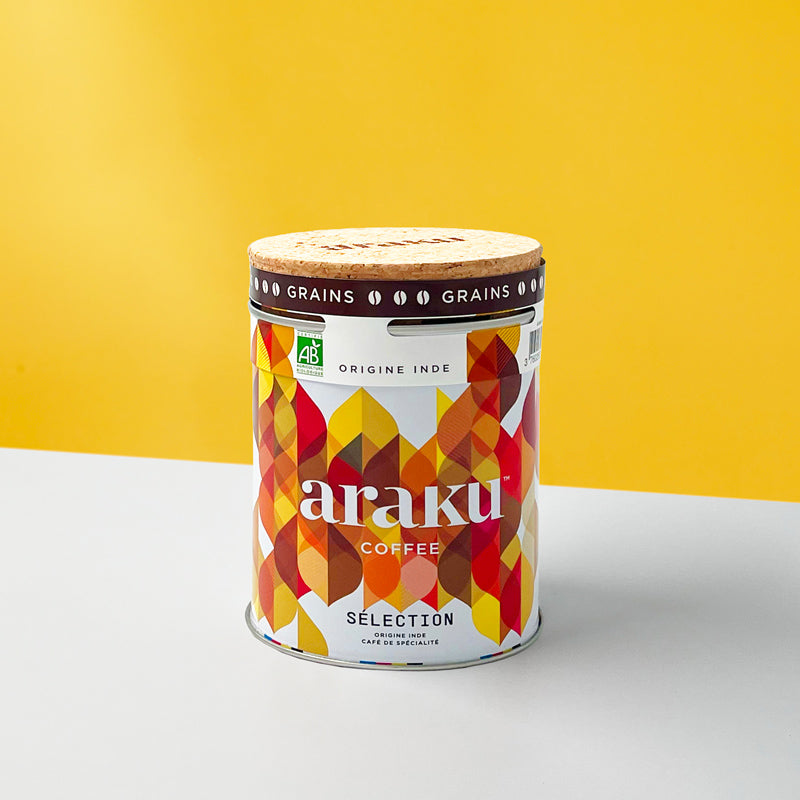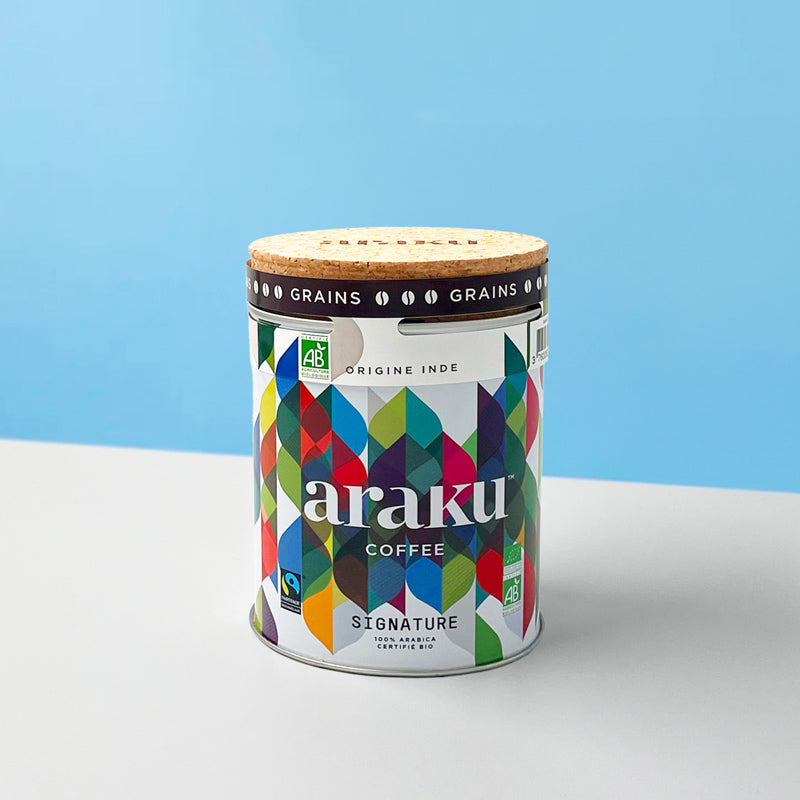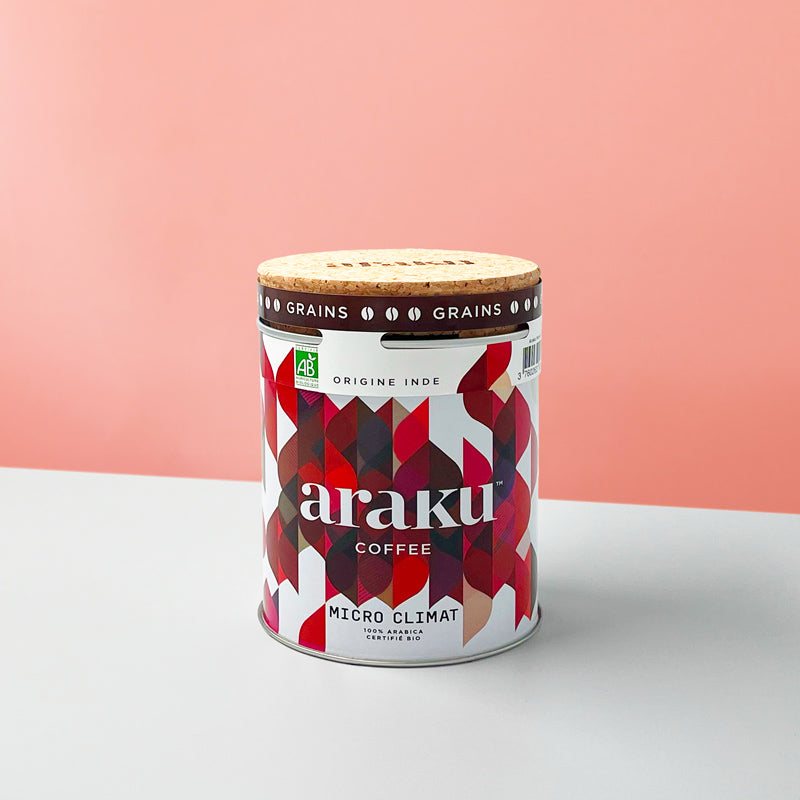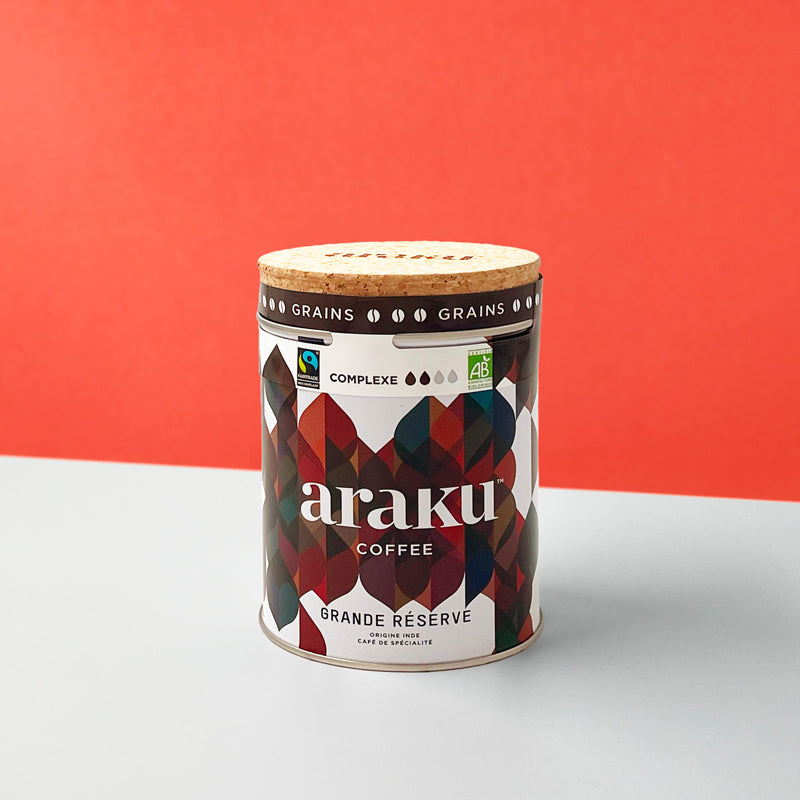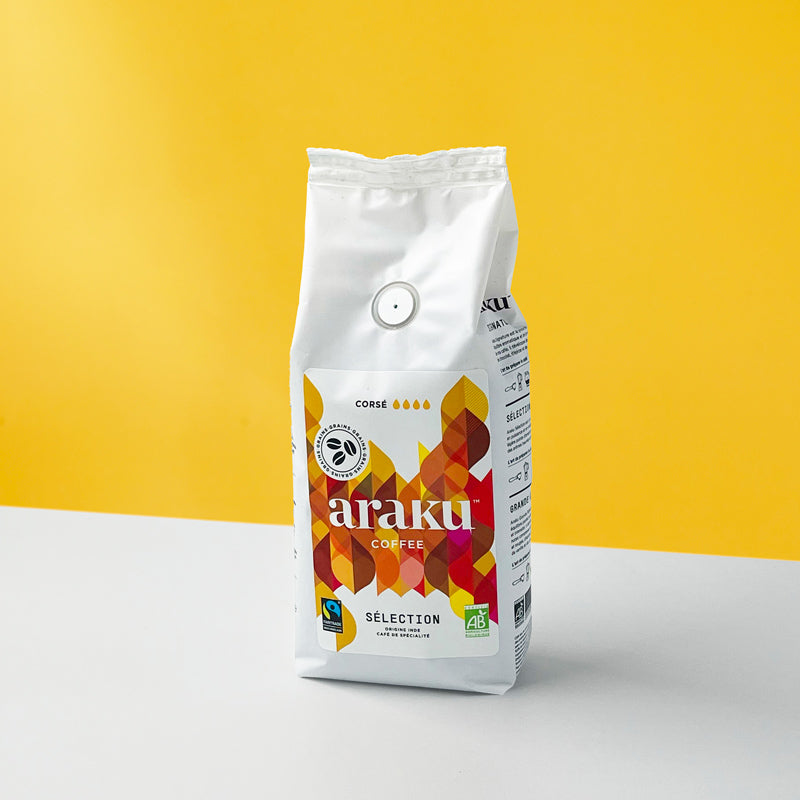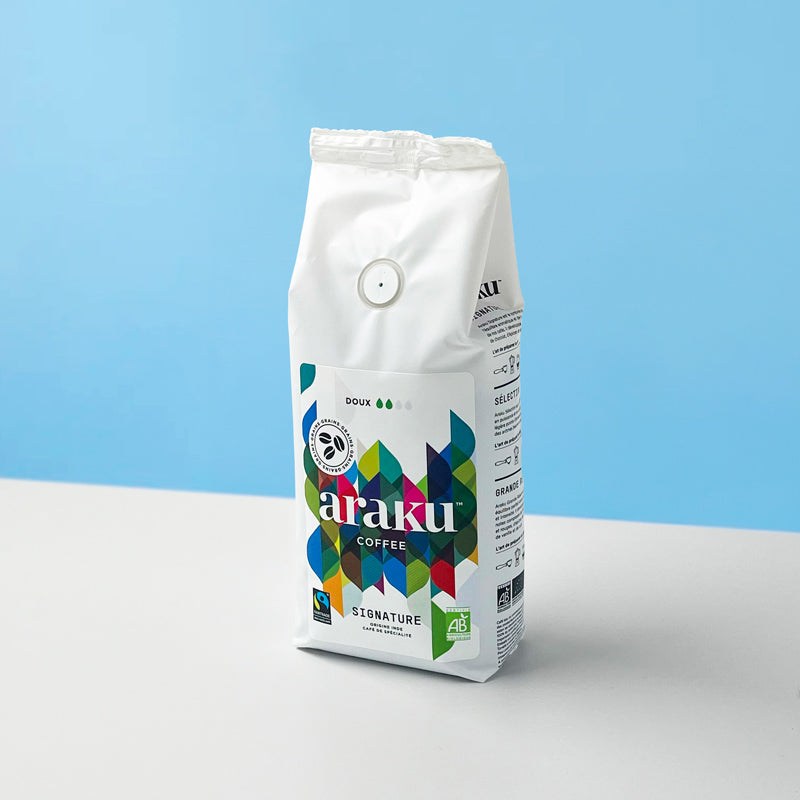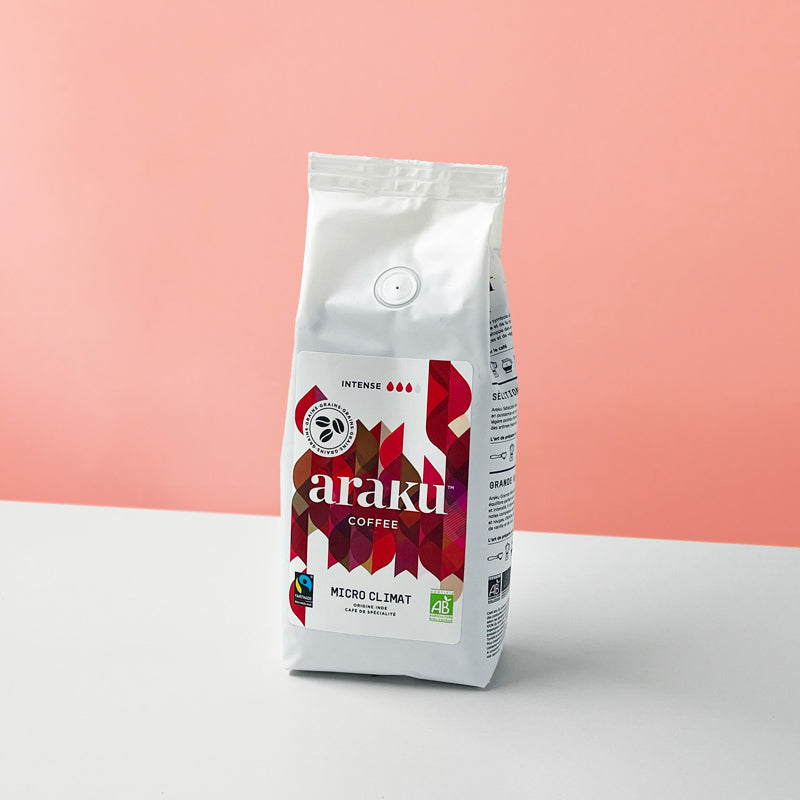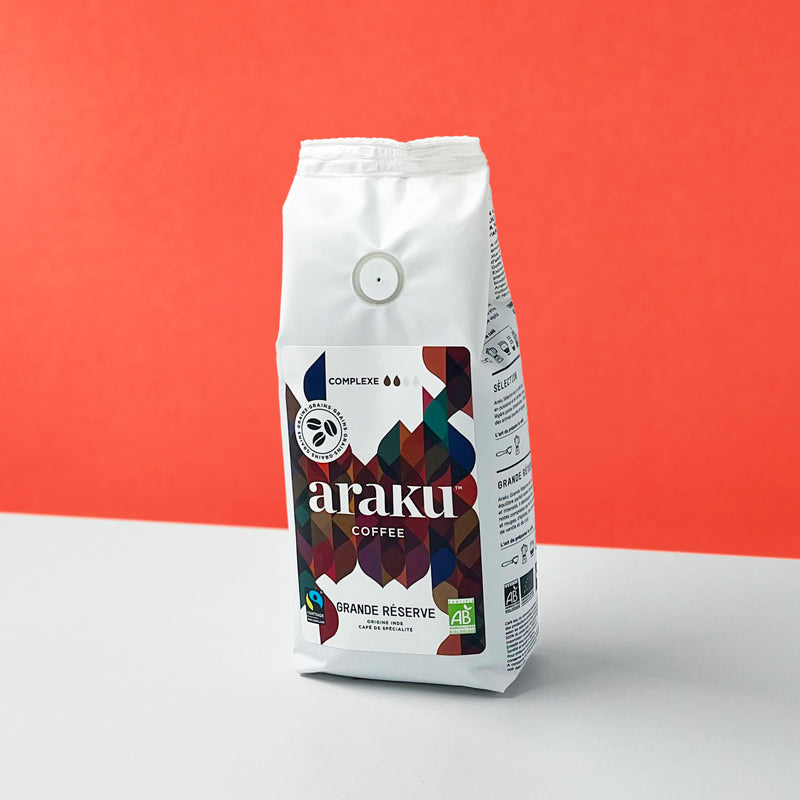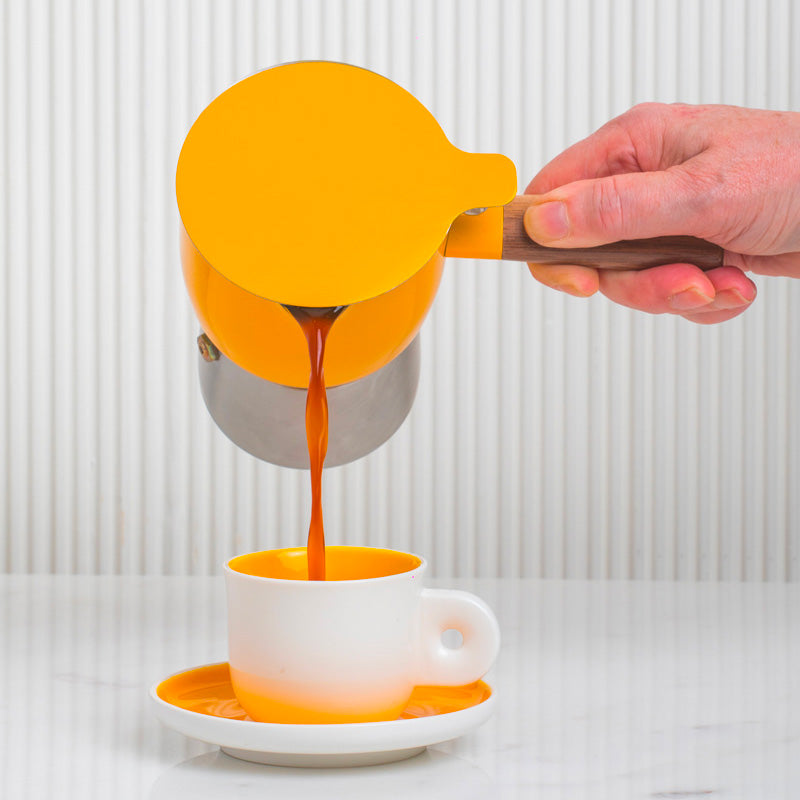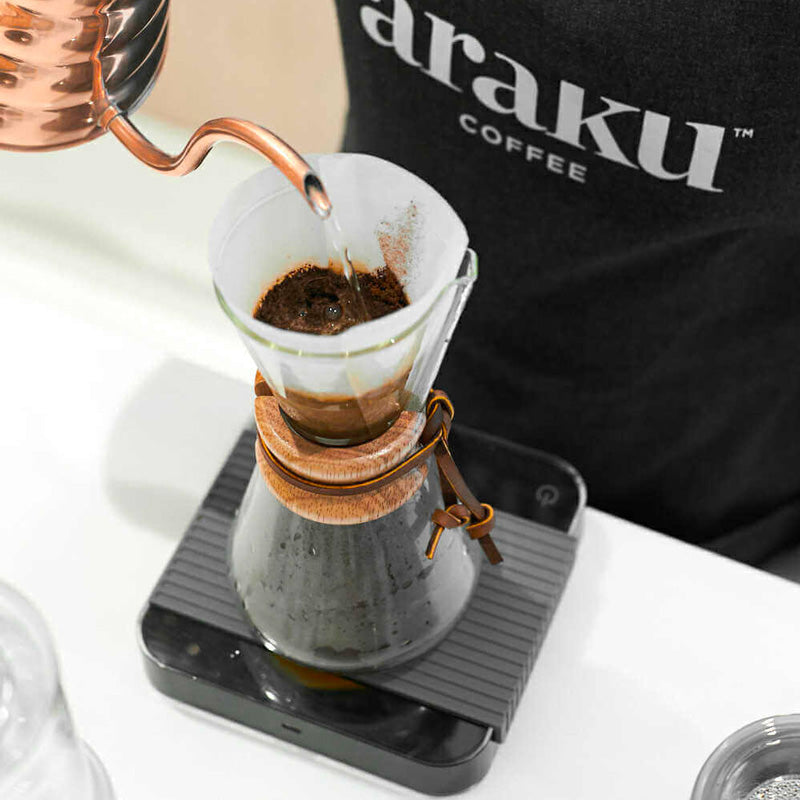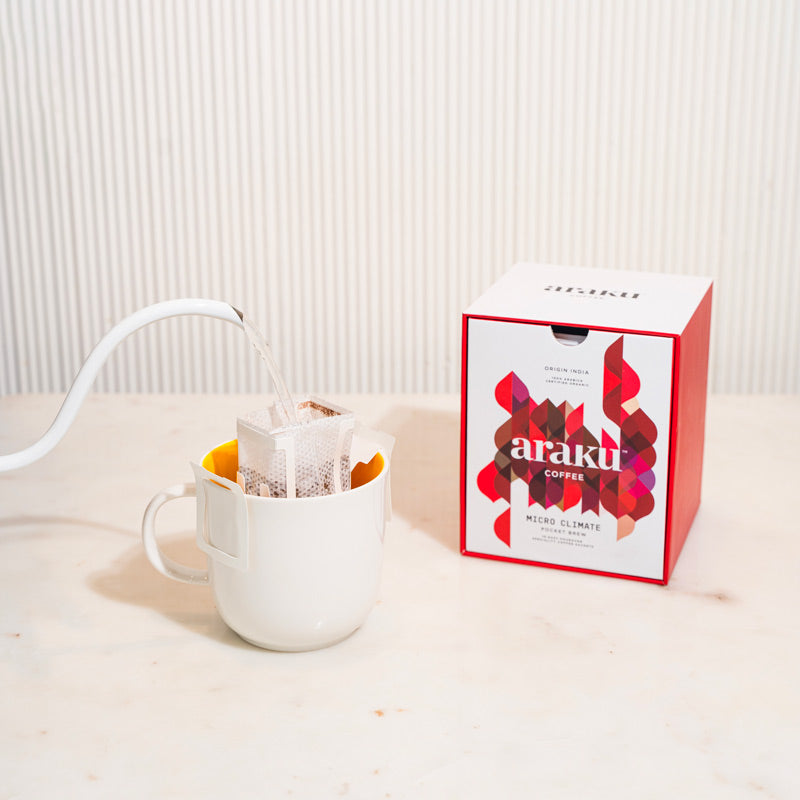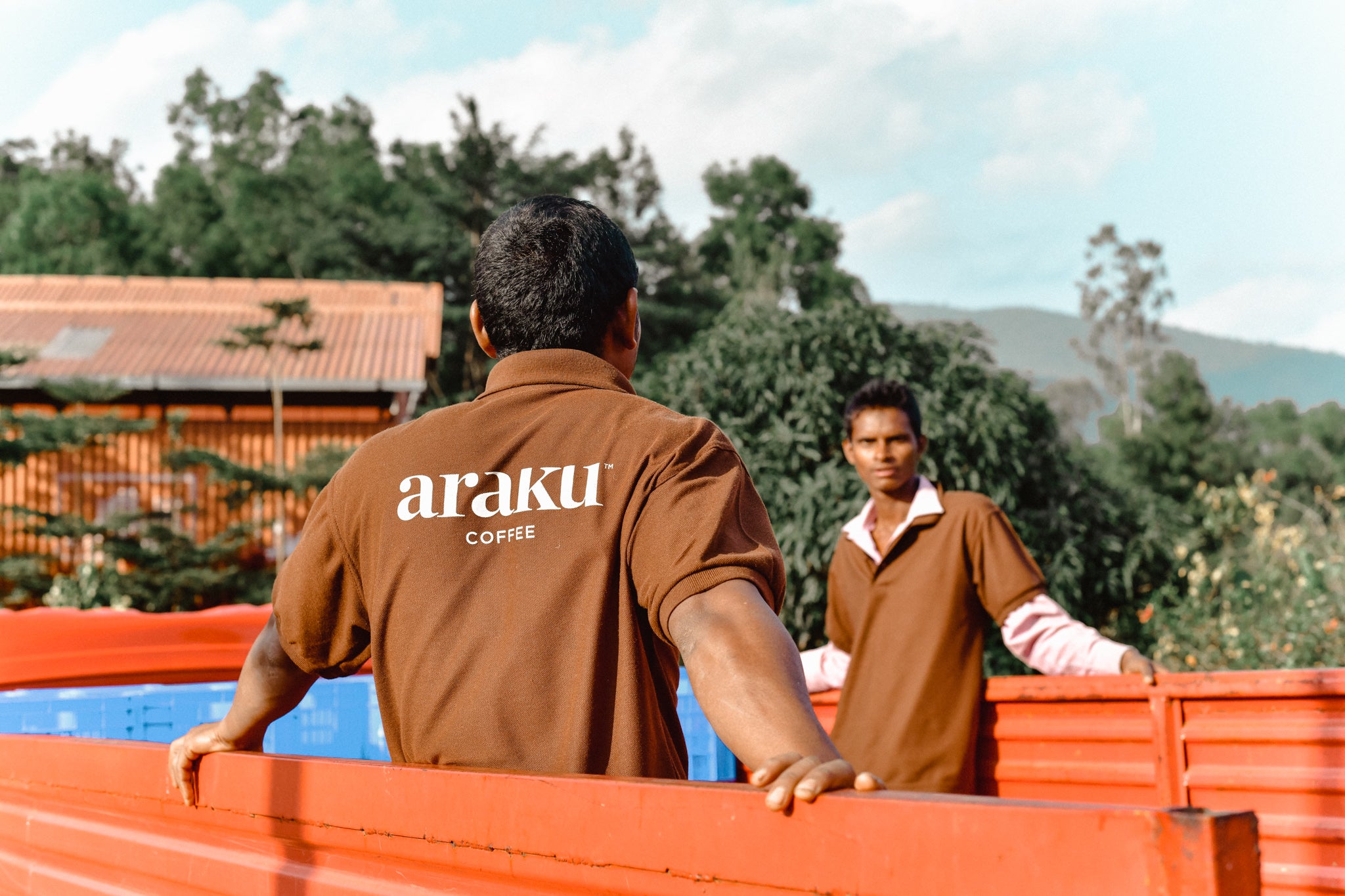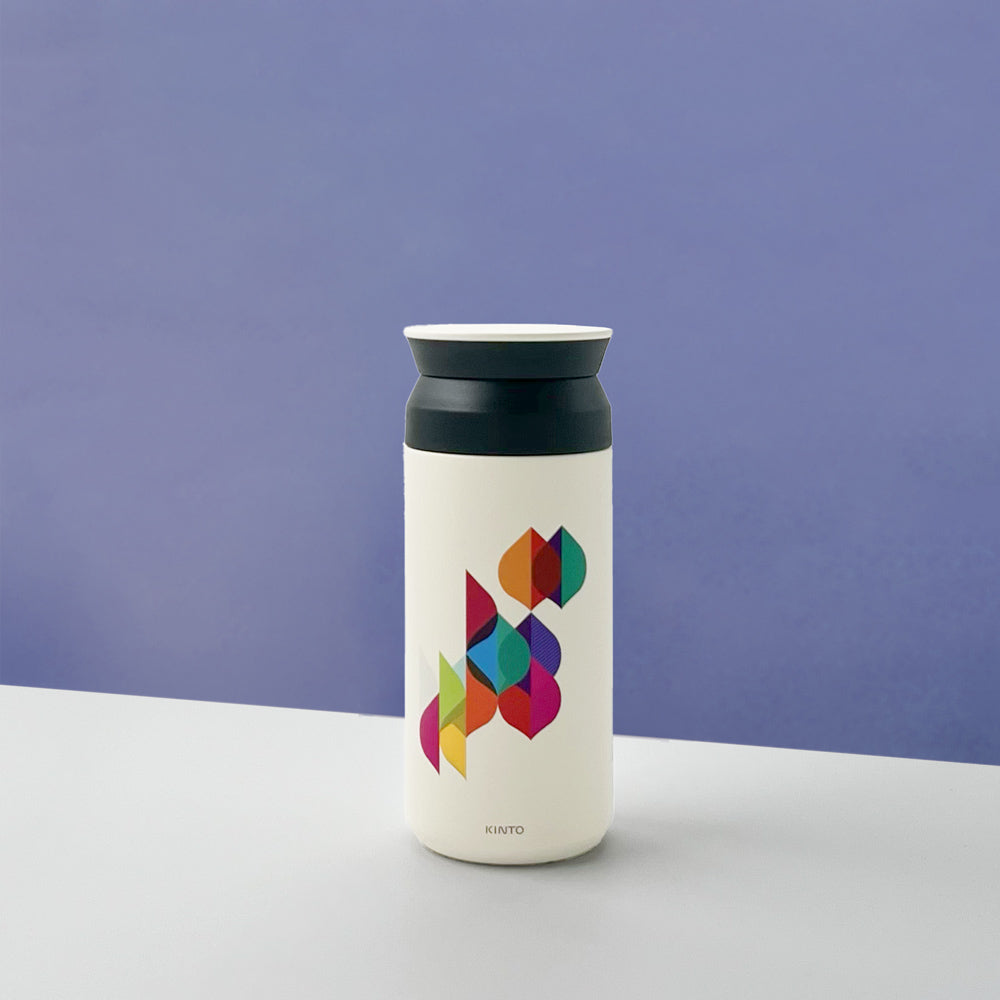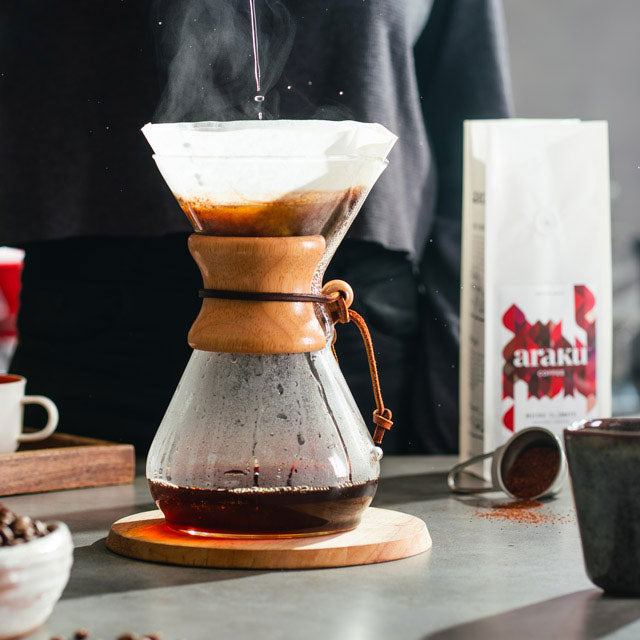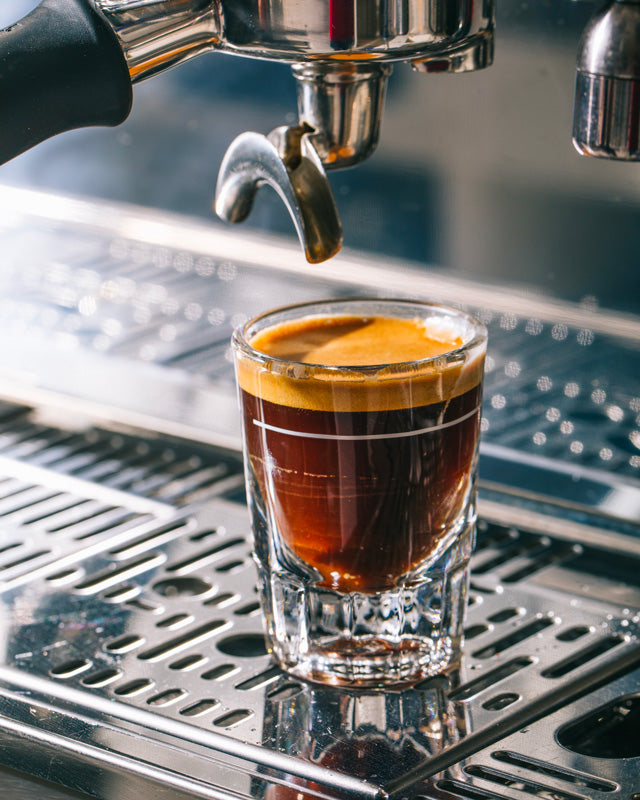
How to successfully brew espresso
Certainly the preferred method in France for consuming coffee. An espresso prepared with specialty coffee is rich and smooth without being bitter. This widely popular method, however, is one of the most difficult to master. A good espresso requires rigorous preparation, expensive equipment, and adjustment of numerous variables. Even a professional barista must pull a handful of failed espressos every morning before achieving the right combination of all parameters. This guide is intended for preparation with a manual espresso machine such as the Delonghi Dedica.
Steps
Choosing the right coffee beans for espresso
For preparing an espresso, we recommend using coffee with a darker roast. The characteristic of espresso is its smooth body. Coffee roasted more heavily makes it easier to extract a creamy espresso. Our organic specialty coffees Selection and Micro Climate are perfectly suited for this method.
Another crucial aspect for espresso is the freshness of the beans. If the beans used were roasted too long before extraction, the crema, that thin brown layer on top of the espresso, will not appear. As a general rule, we recommend using coffee roasted within the last 6 months.
However, be cautious not to use coffee that is too fresh either! After roasting, coffee beans retain a lot of CO2. We recommend waiting at least 2 weeks after roasting to allow the coffee to degas. This will prevent unpleasant CO2 flavors in your cup. If you absolutely want to taste a very fresh coffee, consider preparing it using a manual filter method, such as a V60. Gentle brewing methods typically have a degassing phase called "bloom" in their recipes.
Which grind size for espresso?
To brew espresso, you will need very finely ground coffee. This grind size is needed to create a very compact coffee puck. A compact puck is necessary to achieve the ideal pressures for a creamy espresso. Be careful not to grind to fine as that will result in a very bitter and tart espresso.
As with all other methods, grinding your coffee just before brewing is ideal. The fresher your coffee is ground, the more aromas and nuances it will have. However, be careful with the choice of grinder, as not all grinders can produce a grind fine enough for espresso! For a manual grinder, also keep in mind that a very fine grind means a significant and long effort every morning. Therefore, we recommend the Fellow Opus electric grinder for an optimal daily experience.
What dose of coffee should I use for my espresso?
Historically, an Italian double espresso was prepared with about 14g of coffee, and a single with half that amount, 7g. Today, in modern specialty coffee shops, the trend is rather between 17g and 21g for a double espresso.
However, the right dose for you will mainly depend on the size of the basket provided with your machine. Coffee professional Lance Hedrick has suggested a simple method to find the dose that suits you:
- Fill your portafilter with coffee and tamp it down, then insert it into the machine. Without starting the extraction, remove the portafilter and check the top of the coffee puck.
•If you see a mark in the coffee without having started the machine, then the dose is too high and you need to remove some ground coffee.
•The right dose is reached when you have a suitable amount of ground coffee tamped in the basket without a mark left by the machine.
•Remember to weigh this dose so you can grind the right amount each time.
If you significantly change the grind size afterward, the ideal dose may change. For example, a coarser grind will take up more space in the basket once tamped.
Grind
Tamping coffee is a crucial element in making a good espresso. A successful tamp should produce a flat, level and compact coffee puck, ensuring good water distribution and even extraction.
You don't need to use all your strength! Press the tamper down until you feel that the grounds are compressed. Take your time to make sure you're tamping straight! If the tamping is not uniform, part of the puck might be over-extracted and another part under-extracted, resulting in an espresso that is both too bitter and too acidic.
If you want to buy a tamper other than the one provided with your machine, make sure to get the right size. Professional or semi-professional machines use 58mm tampers, but consumer machines tend to use 54mm or 51mm tampers. For example, the Delonghi Dedica requires a 51mm tamper. We also recommend a flat-bottomed tamper rather than a convex one, for more consistent extractions.
What pressure and temperature should be used for espresso?
Many espresso machines do not have the capability to change these parameters. If this is the case with your machine, don't worry; focus on other variables to adjust your coffee.
If your machine does allow modifications to these parameters, a typical espresso is extracted at a constant pressure between 8 and 9 bars. Nowadays, some specialty coffees may offer espressos extracted at pressures ranging from 3 to 9 bars. However, if you are new to espresso, it is not recommended to modify this variable. Instead, focus on other variables to adjust your espresso.
If you have the option, temperature is a variable that is advisable to adjust. The recommended range is between 88°C and 94°C. For darker roasts, prefer a lower temperature, and for lighter roasts, prefer a higher temperature.
Recipes and ratios
The three “recipes” that we will see here are the most iconic: normal espresso, ristretto and lungo. To differentiate these three drinks we use ratios, that is to say the quantity of coffee in a cup (in grams) compared to the ground coffee placed in the basket (also in grams).
Espresso is the most consumed of the three for a reason; a good espresso is balanced, aromatic and yet creamy. An espresso has a ratio of 1:2 to 1:3 , that is to say that we seek to have 2 to 3 times the weight of the ground coffee used as liquid coffee. If you use 18g of ground coffee, the espresso should weigh between 36g and 54g in 25 to 30 seconds.
A ristretto is a very powerful, concentrated and pungent coffee, rarely consumed alone outside of Italy. However, it has regained some success thanks to flat white. The Australians, inventors of this drink, use a double ristretto to prepare this drink. Its high concentration makes it an ideal choice for a milk drink. A ristretto has a ratio between 1:1 and 1:1.5 . For example, if we use 18g of ground coffee, the ristretto should weigh between 18g and 27g in 25 to 30 seconds.
Lungo is a more aromatic coffee but has the least texture of the three. It is often favored by baristas for very aromatic, light roasted coffees. A lungo has a ratio between 1:3 to 1:5 . For example, if we use 18g of ground coffee, the lungo should weigh between 54g and 90g in 25 to 30 seconds.
What should be the extraction time for my espresso?
The ideal extraction time for an espresso generally ranges between 20 and 30 seconds. However, extraction time is not a variable to be directly adjusted but rather serves as an indicator to determine which other parameters need to be changed, especially the grind size.
For example, if an espresso flows too slowly, taking 40 seconds, it indicates that the grind size is too fine. Therefore, a coarser grind should be used next time. Do not reduce the extraction time by stopping the machine prematurely; the resulting espresso may be under-extracted and acidic.
Let's consider another example: if the espresso flows within 25 to 30 seconds but tastes too bitter, it indicates that the grind size is correct, but another variable is off. In this case, the temperature is likely too high or the roast is too dark.
The result is not to my liking, what can I do?
If your coffee is too bitter , your coffee is probably over-extracted! Consider increasing the grind size and lowering the water temperature. Using specialty coffee beans with a lighter roast is also key to achieving less bitterness in the cup.
If your coffee is too tart or weak , then your coffee is probably under-extracted! Consider reducing the grind size, increasing the water temperature and increasing the dose of ground coffee (without exceeding the maximum dose in the basket).
Some coffees have naturally more acidity and fruity notes. If these profiles are not to your taste, do not hesitate to take our online quiz to guide you towards a specialty coffee that will suit you better.
For more advice, do not hesitate to come and see us directly! Our baristas will be delighted to welcome you and guide you on the preparation of our exceptional coffees.

